Fertilizers for spruce: types and subtleties of application
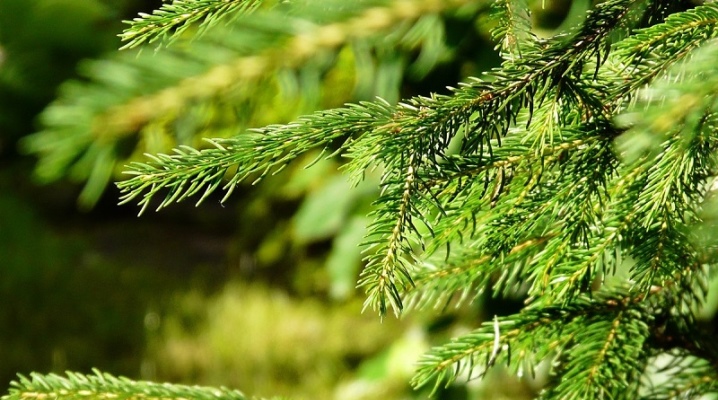
Spruce is a very beautiful, evergreen and picky tree. Due to the fact that it does not require special care, every year more and more people plant it in their summer cottages or personal plots. In order for this forest beauty to please the eye all year round, and not just take up space, you need to know what, how and when to feed her.
Fertilizers for spruce are commercially available in various forms. This could be:
- powder;
- granules;
- crystals;
- liquid concentrated solution;
- spray.
They can also be of a complex action or of a narrow focus. Each type of feeding has its own dosage and method of application, which must be strictly adhered to so as not to harm the plant.
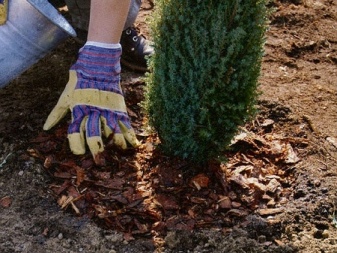
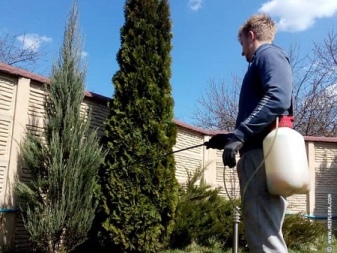
Peculiarities
If a coniferous tree has a rich bright color and a characteristic shine of needles, then this indicates that it has enough nutrients. But by itself, such a phenomenon happens quite rarely and means that the soil has increased acidity. This is the kind of soil that conifers love. The transplanted young spruce can be content with the contents of the planting hole for some period of time, but after a while it will still have to be fed.
Some inexperienced hobby gardeners make the mistake of feeding the spruce in the same way as fruit trees. This should not be done, if only because they do not bear fruit and do not shed their foliage. For development and annual growth, they need other fertilizers in a different dosage.
Spruce, both blue and ordinary, with a sufficient amount of nutrients and an optimal temperature, is capable of vegetating all year round. But since the climate in winter is not conducive to this, it is necessary that at this time of the year the conifers are at rest.
Young shoots that have not reached the woody phase by the end of autumn may die under the influence of low temperatures. Sometimes this even leads to the death of the entire tree.
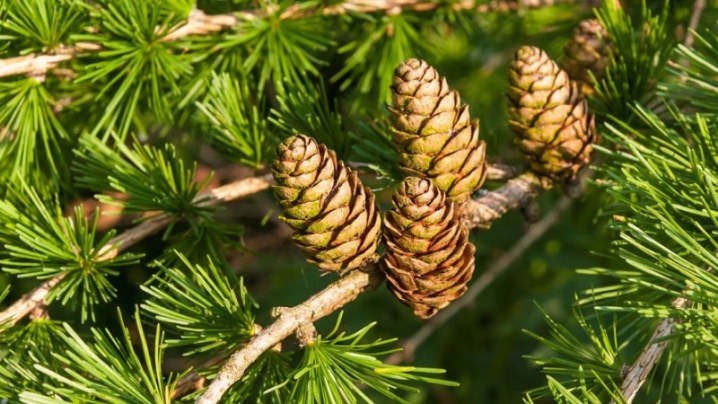
Invisible helpers
During the first year after planting the seedling in open ground, mycorrhiza forms on the root system. It is a type of fungus that helps the roots adapt nutrients to the plant. As the underground part of the spruce grows, mycorrhiza also increases. You should be aware that overuse of chemical compounds can damage or even kill it. For this reason, you should not get carried away with frequent feeding - you need to strictly adhere to the instructions.
An increase in mycorrhiza and other microorganisms useful for conifers is facilitated by the addition of soil from a coniferous forest to the near-stem hole.
If it is not possible to collect it in a natural environment, then you can buy it in a specialized store.
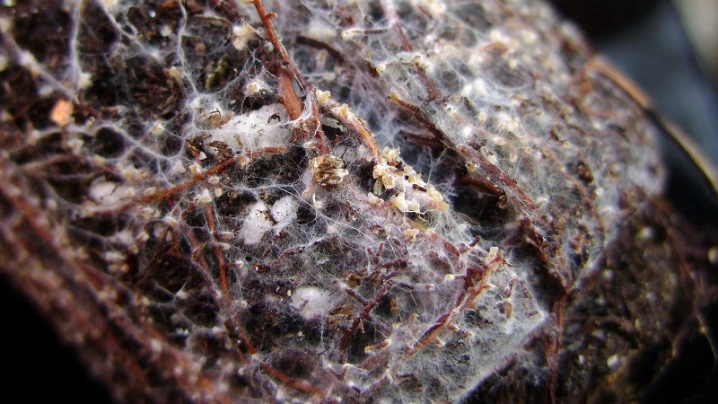
Mineral fertilizers
First of all, a seedling purchased or grown independently should be planted in a well prepared in advance, filled with black soil mixed with compost and sand. Its size should be at least three times larger than the container in which it grew before. This is necessary for the proper development and strengthening of the spruce root system. There is no need to apply any fertilizers in the first 3 years of her life. The seedling will have enough black soil nutrients in the planting pit.
In the fourth year after planting a spruce seedling, fertilization can begin, since the root grows, extends beyond the hole and needs additional stimulation.On sale you can find a huge number of varieties of complex mineral fertilizers for conifers. However, before you buy any particular product, you need to carefully study its composition.
Nitrogen, which is responsible for stimulating plant growth, should be no more than 15%, otherwise top dressing can provoke a rapid vegetation process, which is undesirable. For ate, the vital components are phosphorus and potassium. - they will provide the plant with a successful wintering, resistance to frost and icing of the aboveground part, as well as the safety of the root system.
Trace elements (in particular magnesium and iron) are part of the cells of needles and are involved in photosynthesis. They are responsible for the external nutrition of the plant. When using complex mineral fertilizers, you must strictly follow the instructions and recommendations for use, otherwise the result may be unpleasantly surprising.
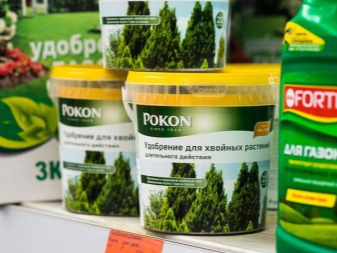
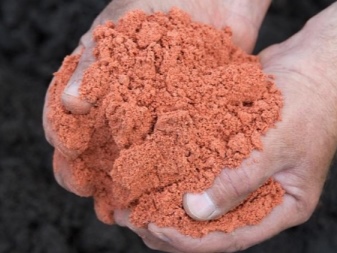
Use of organic
In order for a spruce growing at home to grow quickly and evenly and not turn yellow, you need to use organic fertilizers. But not all varieties are suitable.
Can not use:
- chicken droppings;
- fresh manure;
- herbal infusions.
It is better to opt for the options described below.
- Biohumus. It is a waste product of earthworms, containing a huge amount of nutrients and practically no nitrogen in its composition. A lot of fertilizers have been created on the basis of biohumus, including those for conifers. They are all commercially available in the public domain (both liquid concentrated, and in granules or in powder).
- Compost. You can't imagine the best fertilizer for ephedra. The remains of plants and foliage, processed by insects and microorganisms, form an almost ideal natural food. Soil, abundantly fertilized with compost, is practically the natural habitat of spruce.
- Mulch. Mulching the soil around the trunk of a tree is an effective way to avoid drying out and losing nutrients. This is done using biodegradable components: humus, straw, sawdust. You can also use sand, pebbles, or rubble. The top layer of soil is mixed with the mulch, while the water freely penetrates to the roots and nourishes them.
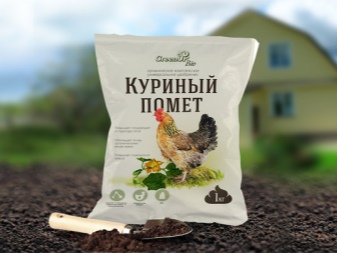
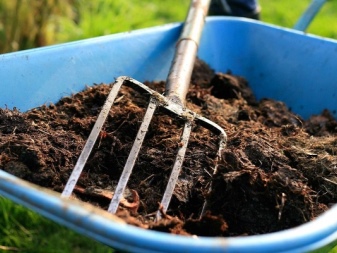
The ways
The best option for feeding spruce is considered to be the introduction of dry fertilizers. To do this, pour the required amount of substrate into the near-stem hole, distribute it evenly and loosen it, thereby mixing it with the ground. Nutrients will gradually go into the soil, absorbed by the root system, promoting the growth and development of the plant.
Compost tea can be made for a quick effect. It is done very simply: a glass of vermicompost should be poured with a bucket of water, mixed and kept for a day. After 24 hours, the infusion can be used, but each liter must still be diluted with two liters of water. Now you can water the ephedra. In this form, the dressing is absorbed by the spruce much more rapidly.
Fertilizers for spruce, which are not applied to the root zone, but are sprayed directly onto the crown of the tree, are also effective. They are usually used after winter to give the ephedra needles a bright saturated color and provoke the vegetation of new shoots. However, this can also be done in summer: from mid-June to early July. Such feeding is also well absorbed by plants and is beneficial for growth. It is necessary to use sprays on a cloudy day or early in the morning, evening time and calm weather are also suitable.
In the summer, it is very important for blue and ordinary spruce to cleanse the needles from the layer of dust that settles on it at this time of the year. If it does not rain often enough, then you should rinse the crown several times during the season with a stream of water from a hose.
This method works no worse than organic fertilizer, since air exchange is restored, and all vital processes are accelerated.
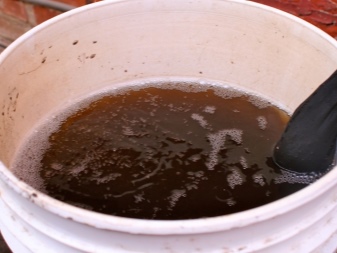

An unaccountable desire to grow a beautiful spruce at home as soon as possible can lead to disastrous consequences and the death of the tree. For example, you should not over-fertilize the spruce (especially with those compounds that contain nitrogen compounds). If the soil on the site is fertile, then feeding the plant is necessary only in the spring and in a minimum amount. The main care that it requires is watering, loosening the root zone and washing away dust and dirt from the needles.
For information on what and when to fertilize conifers, see the next video.



































































The comment was sent successfully.